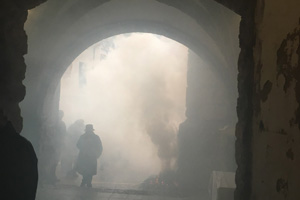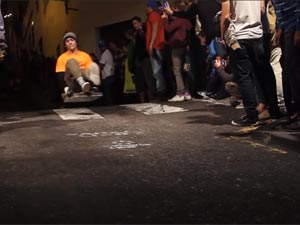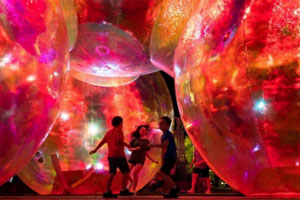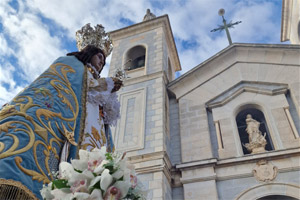The Bollo Festival in Avilés
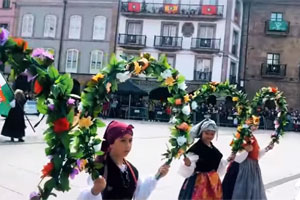
What is the Bollo festival?
The Bollo Festival is a popular event celebrated in the Asturian town of Avilés, at the end of Holy Week, on Palm Sunday and Easter Monday. The festival began in the late 19th century and has been declared a Festival of National Tourist Interest.
The festival's name comes from a buttery cake in the shape of a four-leaf clover, which is given by godparents to their godchildren on Easter Sunday, in exchange for the Palm received on Palm Sunday. This cake is made with butter, flour, eggs, and sugar.
On Easter Sunday, there is a parade of floats, giants and big-heads, bands and folk groups that parade through the city streets. The Brotherhood of Bollo offers a solemn mass at the church of San Nicolás de Bari, followed by the festival proclamation. The festival is completed with various musical performances: habanera choirs, Celtic music and street parties. At midnight, fireworks are set off over the Ría.
On Easter Monday, the so-called street meal is held, where the townspeople come out to eat at tables set up on the streets of the old town and parks. In a continuous row of tables more than four kilometers long, an average of twelve thousand people sit down to share conversation and home-cooked or restaurant-ordered food. The younger people choose the city's parks to celebrate their meal, taking the grass as their table and seat.
What to eat in Avilés
Avilés, in the province of Asturias, is known for its rich gastronomic tradition, which primarily focuses on Asturian cuisine, famous for its dishes of seafood, fresh fish, and dairy products. Here are some suggestions of what to eat in Avilés:
- Fabada Asturiana: This is one of the most emblematic dishes of Asturias. It is a thick stew made from
- Cachopo: Cachopo is a typical dish of Asturian gastronomy, known for its generous size and delicious flavour. It consists of two beef fillets stuffed with Serrano ham and cheese, breaded and fried. The result is a juicy dish, crispy on the outside and full of intense flavours on the inside. It is usually served with chips and salad. The basic ingredients of Cachopo are beef fillets, Serrano ham and cheese, although there are also variations with other fillings such as mushrooms, seafood or peppers. It is a hearty and popular dish in Asturian cider houses, where it is enjoyed in company and with good cider. Cachopo is a true delight for meat lovers and a delicious example of Asturian cuisine.
- Caldereta de Pescado: A stew of fresh fish and seafood, cooked with garlic, paprika, and other spices. It's a delicious option if you enjoy the taste of the sea.
- Pulpo a la Sidra: Octopus cooked in Asturian cider, giving it a unique and delicious flavor. It's a very popular choice in the region.
- Ternera Asturiana: Asturian beef is famous for its flavor and quality. You can try it prepared in various ways, such as grilled chops or in stews.
- Queso de Cabrales: This blue cheese is one of the most famous in Spain and originates from Asturias. It's strong and flavorful, and is often served with fruits or nuts.
- Sidra Asturiana: It's not a dish, but Asturian cider is a beverage you must try. It's known for its refreshing taste and unique way of serving (poured from a certain height to aerate it).
- Arroz con Leche: This dessert is a classic of Asturian cuisine. It consists of rice cooked with milk, sugar, and cinnamon, and is delightfully creamy.
- Bollos Preñaos: These are rolls filled with chorizo, giving them a very special flavor.
- Cabrales with Quince Paste: A combination of Cabrales cheese (or any other Asturian cheese) with quince paste. The contrast of flavors is amazing.
The availability of some dishes may vary depending on the season and the location you find yourself in, so it's a good idea to ask locals or in restaurants for the current local specialties.

